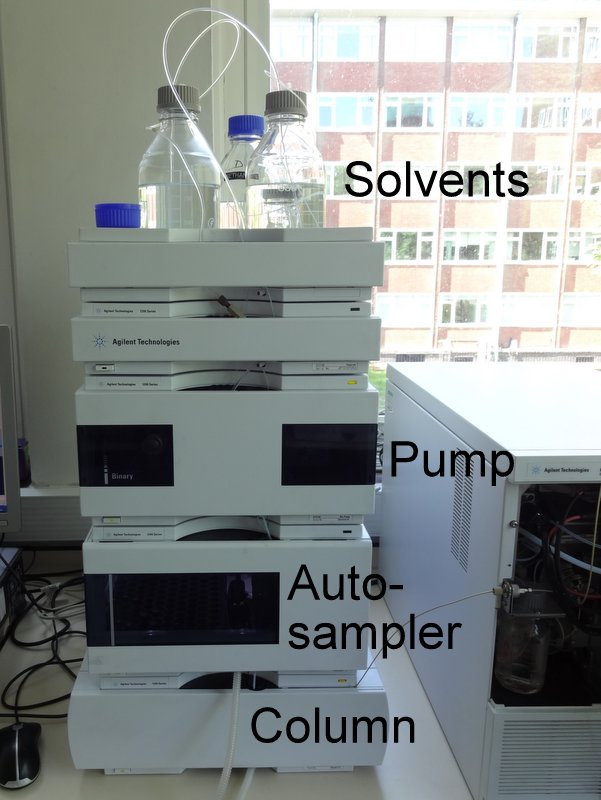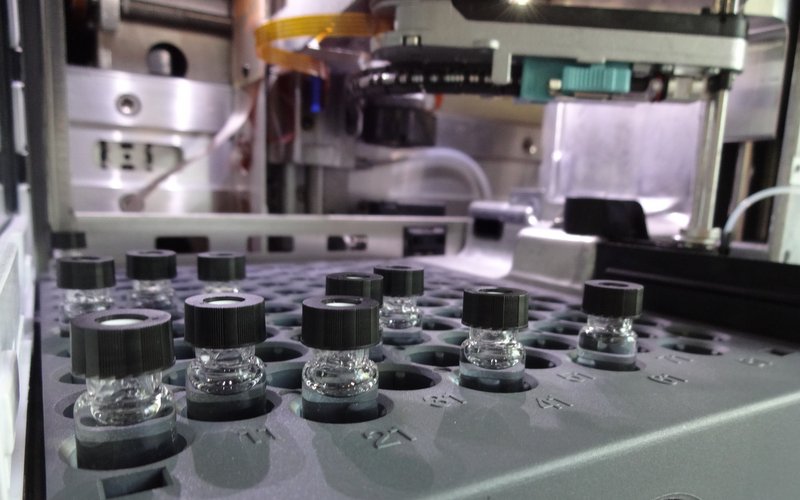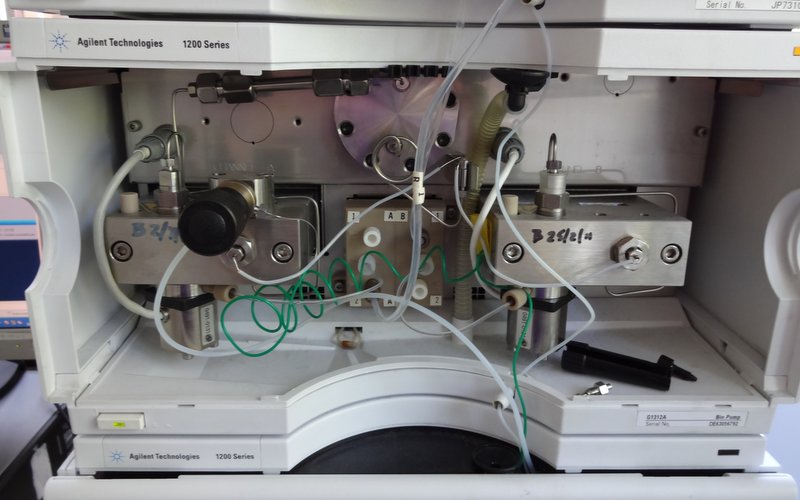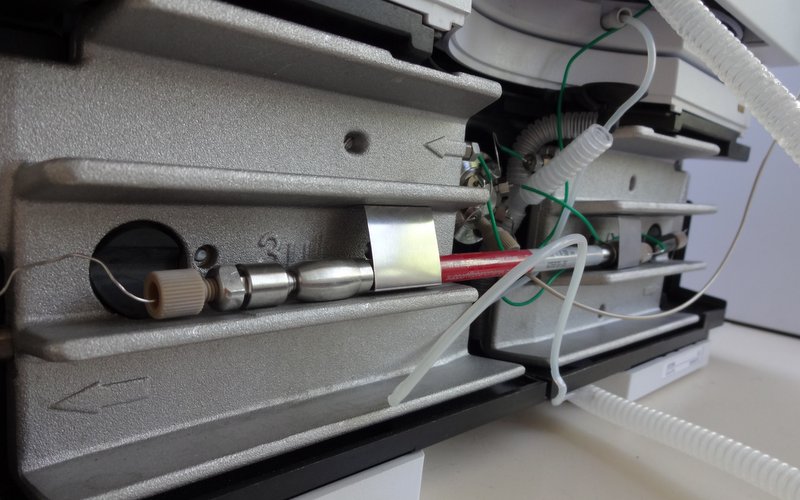Liquid Chromatography is the separation of molecules from a mixture using a liquid carrier medium.
An organic geochemist will often have the problem of having a test tube containing a large amount of different molecules, but only being interested in one or two of them. Much like a child might place felt tip pen and water onto some filter paper to watch the colours run and separate out (with some very artistic results), with liquid chromatography (LC) we split our mixture of molecules up into its individual components so that they can then be analysed. An LC, sometimes known as HPLC where (HP means High Performance or High Pressure), consists of three main parts: the autosampler, the pump, and the column, labelled in the picture below:

The autosampler collects a syringe full of sample from a vial and injects it at the right time onto the column. You can do this job yourself if you have good timing, are very accurate, and have an exceptionally high boredom threshold; the autosampler allows you to queue up a large amount of samples ready to run while you are away from the machine.

The pumps mix two solvents together and push them through the column. Each chemical in your mixture will behave differently when exposed to each solvent, it will be more soluble in one than the other, and will be differently soluble to the other chemicals in the mixture. Often one of the solvents will be polar (have an electrical charge associated with it, e.g., isopropanol alcohol) and the other will be non-polar (be electrically neutral, e.g., hexane). During the sample run, the amount of each solvent being washed through the column will change, and therefore different chemicals will wash through at different times.

The column is a metal tube filled with small solid particles. These are slightly ‘sticky’ to the molecules passing by (they adsorb onto the particle surfaces) and so the chemicals in the samples are not washed through the column that quickly. The solvents that are being used in the experiment remove the molecules from the column particles and move them through the system, until they reach the end of the column and can be detected. At the end of a sample run, the flow on the column is reversed and anything that did not make it through to the end is cleaned out (the ‘backflush’)

3 thoughts on “What is: Liquid Chromatography (LC)?”